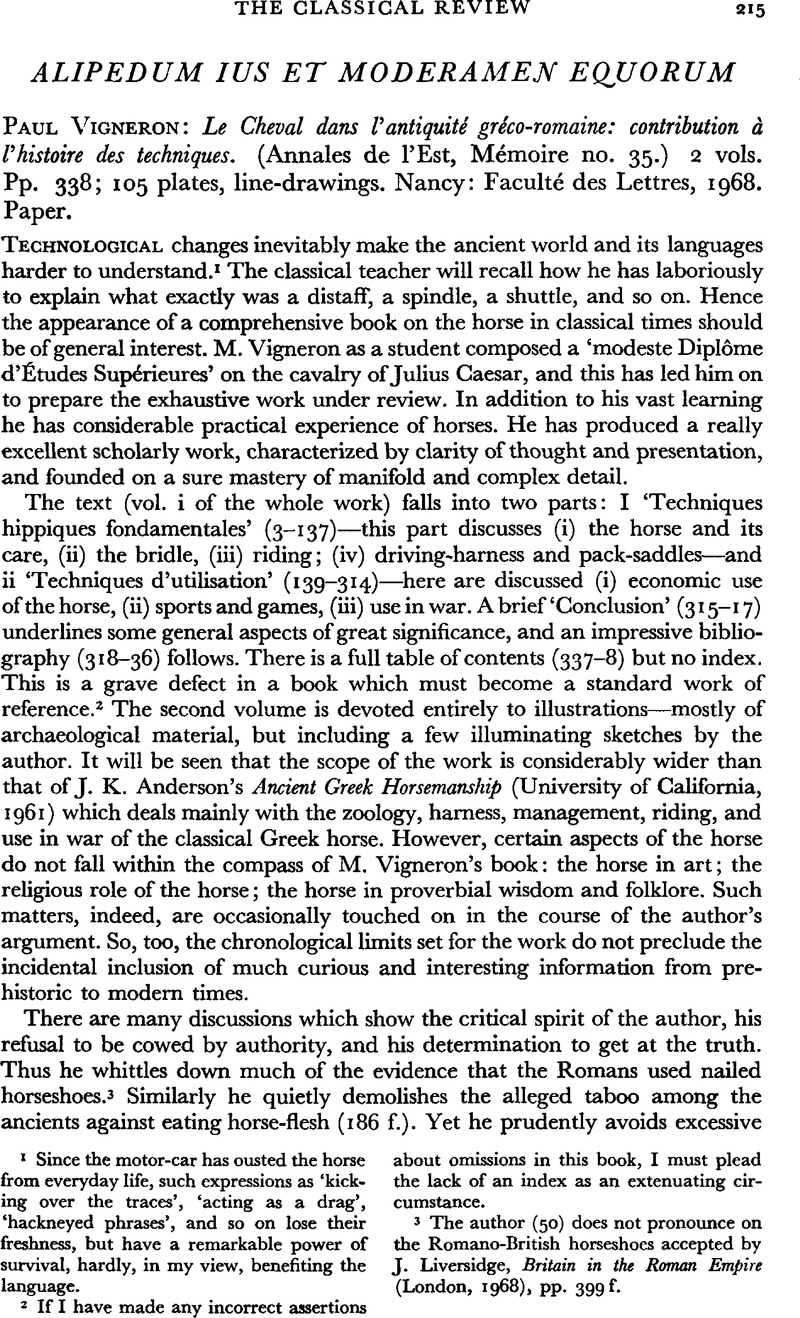No CrossRef data available.
Article contents
Alipedum Ius et Moderamen Equorum - Paul Vigneron: Le Cheval dans l'antiquité gréco-romaine: contribution à l'histoire des techniques. (Annales de l'Est, Mémoire no. 35.) 2 vols. Pp. 338; 105 plates, line-drawings. Nancy: Faculté des Lettres, 1968. Paper.
Published online by Cambridge University Press: 27 February 2009
Abstract

- Type
- Reviews
- Information
- Copyright
- Copyright © The Classical Association 1970
References
1 Since the motor-car has ousted the horse from everyday life, such expressions as ‘kicking over the traces’, ‘acting as a drag’, ‘hackneyed phrases’, and so on lose their freshness, but have a remarkable power of survival, hardly, in my view, benefiting the language.
2 If I have made any incorrect assertions about omissions in this book, I must plead the lack of an index as an extenuating circumstance.
3 The author (50) does not pronounce on the Romano-British horseshoes accepted by Liversidge, J., Britain in the Roman Empire (London, 1968), pp. 399 f.Google Scholar
4 Sophocles, Antig. 140 may be added to the passages cited by Vigneron (121 n. 3), and Jebb's note on this passage is worth reading, as is his comment on Electra 720–2.




